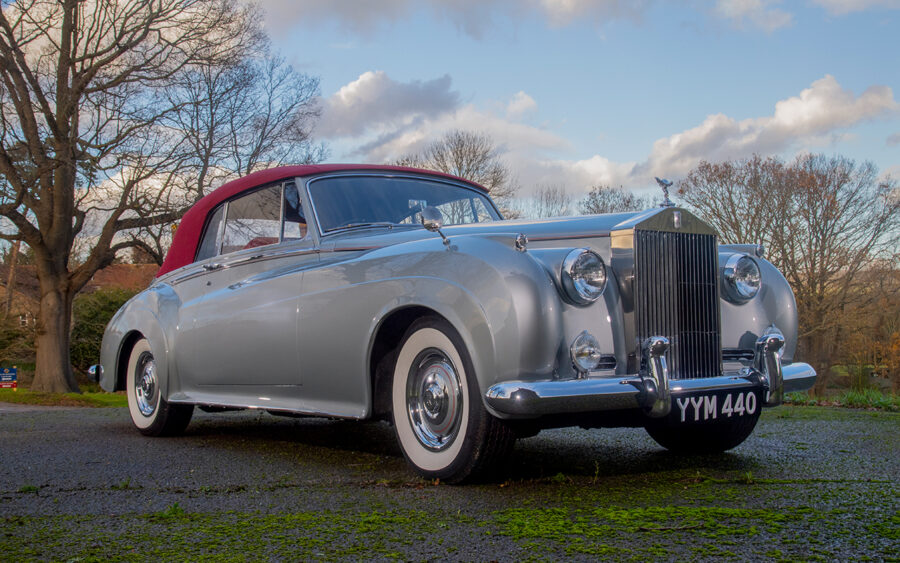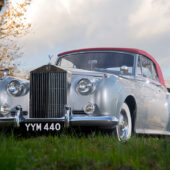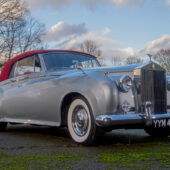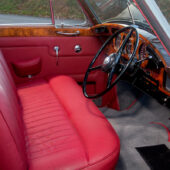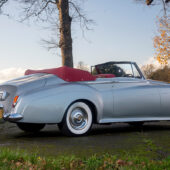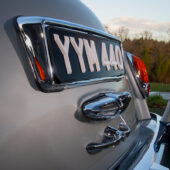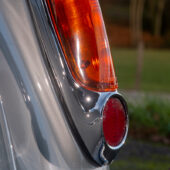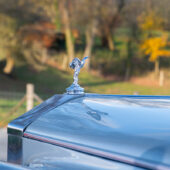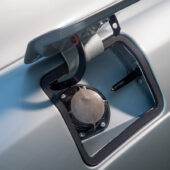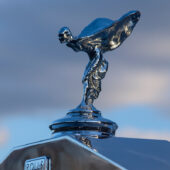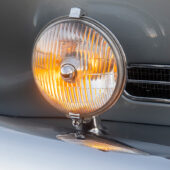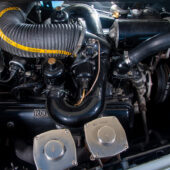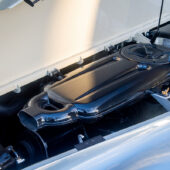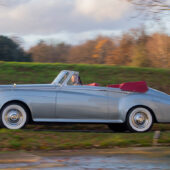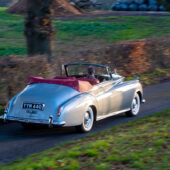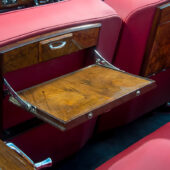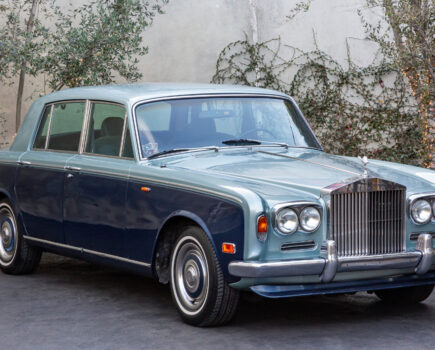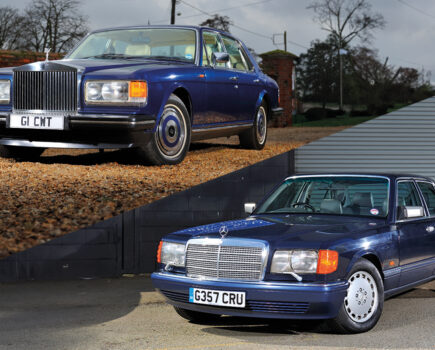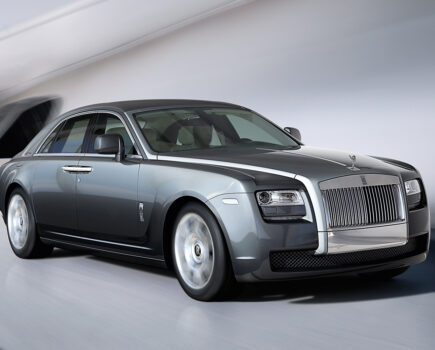We examine a rare Rolls-Royce Silver Cloud II Drophead Coupé with an intriguing history and stunning coachwork
Words: Ian Seabrook Images: Matt Richardson
The importance of the Silver Cloud cannot be overstated. It was the transitional model that really took Rolls-Royce from a builder of chassis to a builder of complete motor cars. It was an essential step, as buying patterns changed and new money arrived – along with new expectations from potential customers.
Of course, it was not the first complete car built by Rolls-Royce; the Bentley MkVI and Rolls-Royce Silver Dawn were both available with Standard Steel in-house bodywork, which really was a first for this prestige manufacturer and marked the start of the great coach-built era coming to a close. The Silver Cloud, however, would be almost entirely new, with a much stronger chassis design and, initially at least, a reworked version of the inlet-over-exhaust six-cylinder engine.
If the Silver Cloud was to sell well it had to look the part, and that responsibility fell upon the shoulders of John Polwhele Blatchley. He had learned his craft at Gurney Nutting & Co Ltd, one of many independent British coachbuilders; but having reached the position of chief stylist at the age of just 23, Blatchley moved to Rolls-Royce in 1940 as the demand for coachbuilt cars evaporated during wartime.
After initially spending the Second World War designing cowlings and other parts for the Rolls-Royce Merlin engine, Blatchley moved to a role as draughtsman in the car division, only to then become a stylist once a suitable position was available. The need for Standard Steel bodywork was driven by metal availability, with aluminium being hard to find due to it being absorbed by the aero industry.
Having only been able to work on specific details of the 1940s steel bodies, Blatchley was soon working on the replacement for these models, though it is said that the Silver Cloud design was sketched in ten minutes after earlier proposals were rejected. Blatchley didn’t work on the Bentley Continental, but it is clear that this model – with its stylishly curvaceous lines – inspired his design nonetheless. The result was a large saloon that somehow managed to mask its bulk with delicate, sweeping curves.
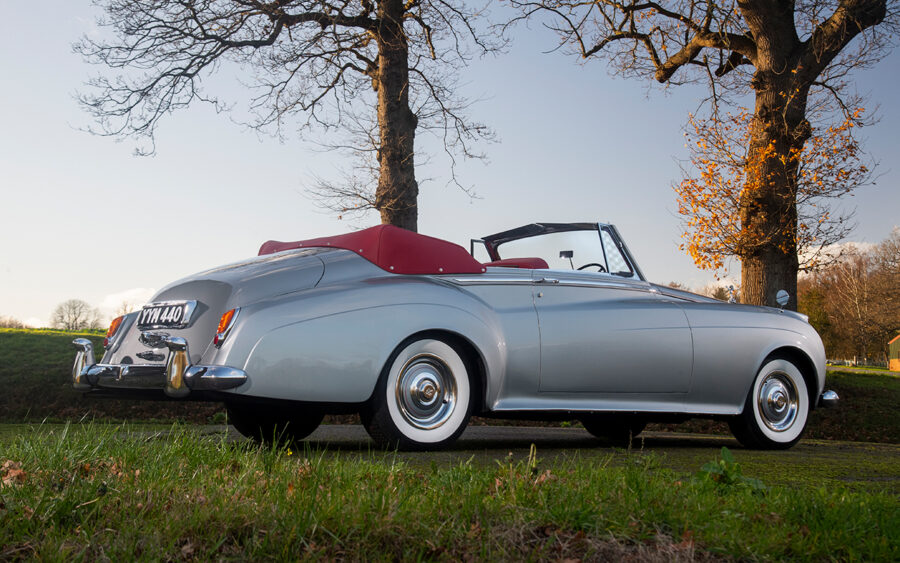
Such curves would work equally well on a two-door body, and it was H.J. Mulliner that turned the Silver Cloud into a very pretty, if rather substantial two-door drophead coupé. An enormous, electric folding roof allowed for a very comfortable four- or five-seater, but the cost when new would have been substantial, and on the Silver Cloud II platform only 107 examples of Design 7504 were built – just 32 of which came with right-hand drive.
The example featured here was built in late 1959, by which time H.J. Mulliner had been absorbed within Rolls-Royce, joining Park Ward as part of the company’s in-house coachbuilding division. Coachbuilt bodies were still constructed at H.J. Mulliner’s Chiswick factory (and would continue to be until 1968), but the change of ownership certainly highlighted the changing tide. This car was one of two built for South African shipping entrepreneur Max Wilson, with both cars featuring a number of premium options – including electrically-operated windows and aerial, rear armrest-mounted radio speakers and whitewall tyres. The H.J. Mulliner-built pair of Silver Clouds was delivered and registered to Wilson Interests Ltd in April 1960.
By 1973, the woodwork on this particular Silver Cloud II was in need of repair, with Jack Barclay commissioning Hoopers Ltd to carry out the work. The car was sold from Wilson Interests Ltd to a Mr Theodorovich in July 1988, with the sale being handled by Classic Automobiles. For some reason, the V5 logbook was re-issued to Mr Theodorovich in 1989, and so he is listed as both the third and fourth owner.
Mr Theodorovich was based in Kowloon, Hong Kong, but the Cloud remained in the UK, where P.J. Fisher continued to maintain and service the vehicle for the following ten years, during which time the car was resprayed in white. Mr Theodorovich then exported the Rolls-Royce to Hong Kong in 2011, whereupon servicing transferred to Frank Dale & Stepsons, a company that maintains a presence in both London and Hong Kong. The Silver Cloud eventually returned to the UK in September 2017.
Soon after, this stunningly handsome H.J. Mulliner creation entered the ownership DM Historics, where the car has undergone a full concours-standard restoration, returning it to the original Shell Grey metallic paintwork with hand-painted red pinstripes. The brightwork was all re-chromed and whitewall tyres have been fitted, as per the original specification. In 2018, the car was treated to a full re-trim in red leather, with grey carpets and a new power-operated hood. The woodwork also required some further work to bring it to the required standard. After completion the car was presented for sale at the time of writing with an asking price of £345,000.

While the logbook shows four previous keepers, it is believed that in fact the only previous owners are Max Wilson and Mr Theodorovich – which is fairly remarkable for a car ordered almost exactly sixty years ago.
Taking in the lines of this drophead is an absolute pleasure. Parked next to other vehicles, the immense size is apparent; but taken in isolation, the lines work so well you could almost imagine that the Cloud design originated as a sleek drophead. The proportions are so well considered that the sheer bulk of the car is very well hidden.
Of course, Blatchley’s great trick was to compose a design that is traditional without being stuffy and upright. The enormous Rolls-Royce grille dominates, but somehow the flowing lines all around seem perfectly matched to it. It is unmistakably a Rolls-Royce, looking quite unlike any other car (other than its illustrious Bentley Continental stablemate). It has presence, without drama.
Perhaps the best thing about the styling is how clean it is. There is no unnecessary adornment, just delightful details – such as the way the enormous sides are broken up not only by the sweeping wing-line, but by subtle echoes of those lines further down the wing. They do just enough to break up a considerable amount of metal.
The interior feels very fresh indeed and those seats are yet to attain a single crease, but it’s the woodwork that really impresses. The way it sweeps into the door cappings is a lovely touch, and the finish is exemplary.
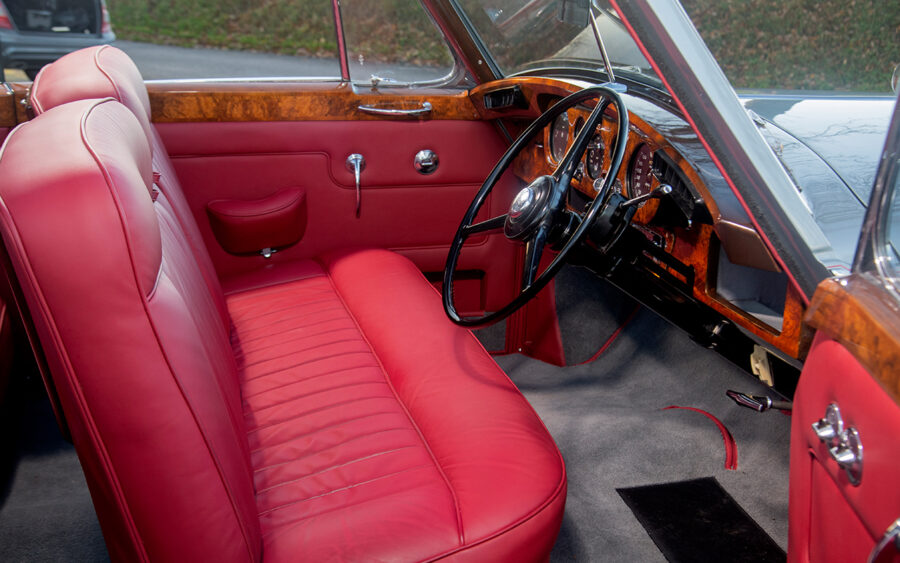
Sat in the back of this glorious machine, it’s amusing to note that the substantial roof actually has courtesy lamps fitted on the rail above the rear window. There is some very impressive engineering in the way the roof folds, and it does so in a surprisingly speedy fashion when activated. For that reason, one is advised to keep fingers well out of the way…
Lowering the hood naturally transforms the interior, which feels rather snug and cosy with it in the raised position. With the hood down, it’s rather like an outdoor picnic on board, albeit with all your home furnishings rather than fold-up chairs and a blanket. It feels unmistakably special.
Under the side-lifting bonnets, the 6230cc V8 and its surroundings have been beautifully detailed. Of course, the V8 engine is not quite as smooth and refined as the earlier six-cylinder engine, but that’s only by comparison. As we manoeuvre the car for photography, the most telling noise is the gentle whirr of the transmission. It’s beautifully vocal.
Overall, this is a vastly impressive Silver Cloud II that looks all the better for its return to Shell Grey. (It’s hard to imagine it being anywhere near as impressive when it was finished in white.) The red trim contrasts beautifully with the grey, making this a car of stunning aesthetics. The whitewall tyres may not be to all tastes, but we think they work well here (and well as matching the car’s original spec), adding a touch of California glamour and helping to break up the substantial flanks.
This special Silver Cloud II sadly reflected the gradual tailing off of Britain’s once-booming coachbuilding industry, although it was a fine way to mark the approaching end. Coachbuilding was not always about being outlandish or ornate. Sometimes it was just about putting a slightly different spin on a design that was really rather splendid in the first place. This car certainly serves as a beautiful example of that.

